Graduated from NYU in 2008 with degrees in economics and finance, Jonathan Travis has now become the go-to real estate broker of the New York art world. He was recognized by the Commercial Observer in their 2015 “30 Under 30″ Issue, has been quoted in the Wall Street Journal, New York Magazine, and most recently responsible for nearly all of the gallery moves to Tribeca. His passion for art is not only known to his clients, but visible to all on his Instagram profile.
LARRY’S LIST talked to Jonathan Travis, who discussed on why he only buys figurative paintings, his most treasured work, and how he sometimes gets an internal feeling that almost forces his hand to write a cheque.
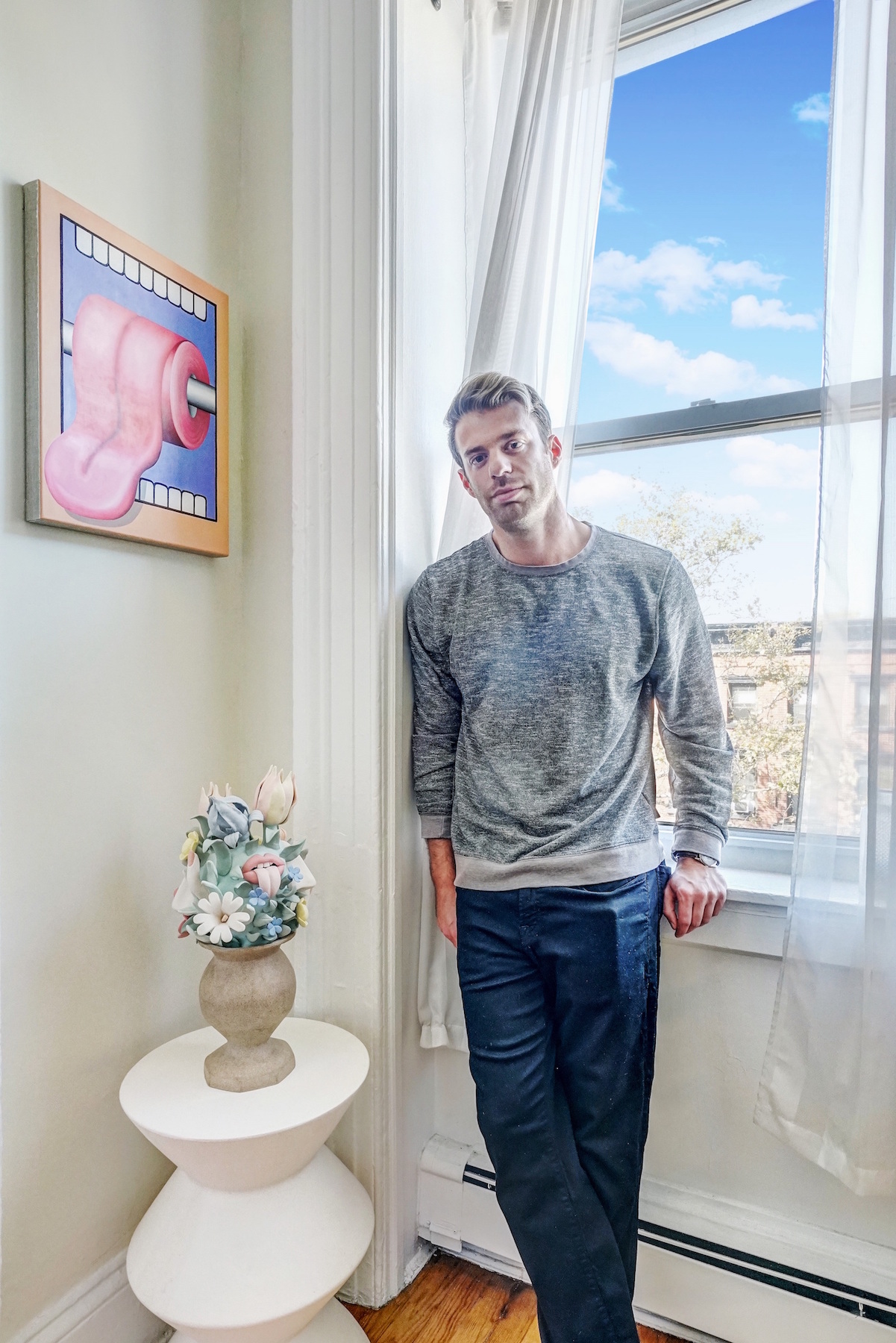
Collecting
What made you want to start collecting art? What is the main motivation behind your collecting?
Collecting art has always felt very natural to me. When I was in college, I was a quasi-antiques dealer of sorts to support myself instead of getting a part-time job. I always felt very comfortable spending my money on art and objects, and luckily I seem to have a pretty good eye. The motivation for my collecting is to build a cohesive collection that I can one day pass along to my children and also share with the world. I find it truly rewarding.
When did you fall in love with a piece of art? What was it?
I fell in love the second I saw my Peter Saul painting in person. I searched for over two years for a work that I really loved and also could afford. I was finally able to find the perfect piece a like six months ago, and I still get excited every time I see it on my wall. I cannot wait for his survey at the New Museum next year! I think he’s one of the most undervalued, underappreciated, and most influential living artists.

Why do you focus on emerging artists in your collection?
I focus on emerging artists for a few main reasons. Firstly, my budget is not quite in the blue-chip range yet. I’d always rather have a seminal painting by a younger artist whose work I love, than a drawing or print by a more established artist. Secondly, it’s a great thing to support young living artists. Buying a young artist’s work helps nourish their confidence, and supports their mission to express himself or herself. Lastly, making a discovery of a new artist early on and watching their career take off is both super exciting and gratifying.
Why has figurative painting consistently attracted you? Is there any theme or topic that unites all the works you have acquired?
Behind every figurative painting lies a narrative, a story the artist is looking to tell. I find it very rewarding to stand in front of the work and let that meaning reveal itself. The viewer doesn’t need an art history degree to look at a portrait, or landscape, and be able to get a sense of what the artist is attempting to convey. I just don’t get that pull with abstract works.
I most definitely gravitate towards work that requires a significant level of skill and craftsmanship by the artist. Nearly all of the works I own have a particular attention to detail and are labor-intensive.

What were the first and the latest artworks you purchased?
The first piece of art I purchased was from a guy selling prints in Madison Square Park. He painted these super weird surreal landscapes, and I asked him to sell me the original painting for my favorite print image. I paid $300 for the 10” square oil on panel, and still enjoy it to this day. The latest artwork I bought just happened last week and is a mixed-media painting by a super talented young artist named Kareem-Anthony Ferreira, from his first solo show that just opened last week at Johannes Vogt.
How many artworks do you own? Where do you display your collection?
My collection is currently comprised of just over one hundred works. All of which are figurative! A lot of my collection is displayed at my apartment in Brooklyn. It is likely (read definitely) overhung, but I don’t care. My goal is to have as much of the work I own on display because I truly love living with it. I do have a storage unit, but I rotate the art. I also have works hung in my parents’ home. My favorite museum in the country is the Barnes in Philly, which hangs their collection salon style. I may have taken some inspiration from there.
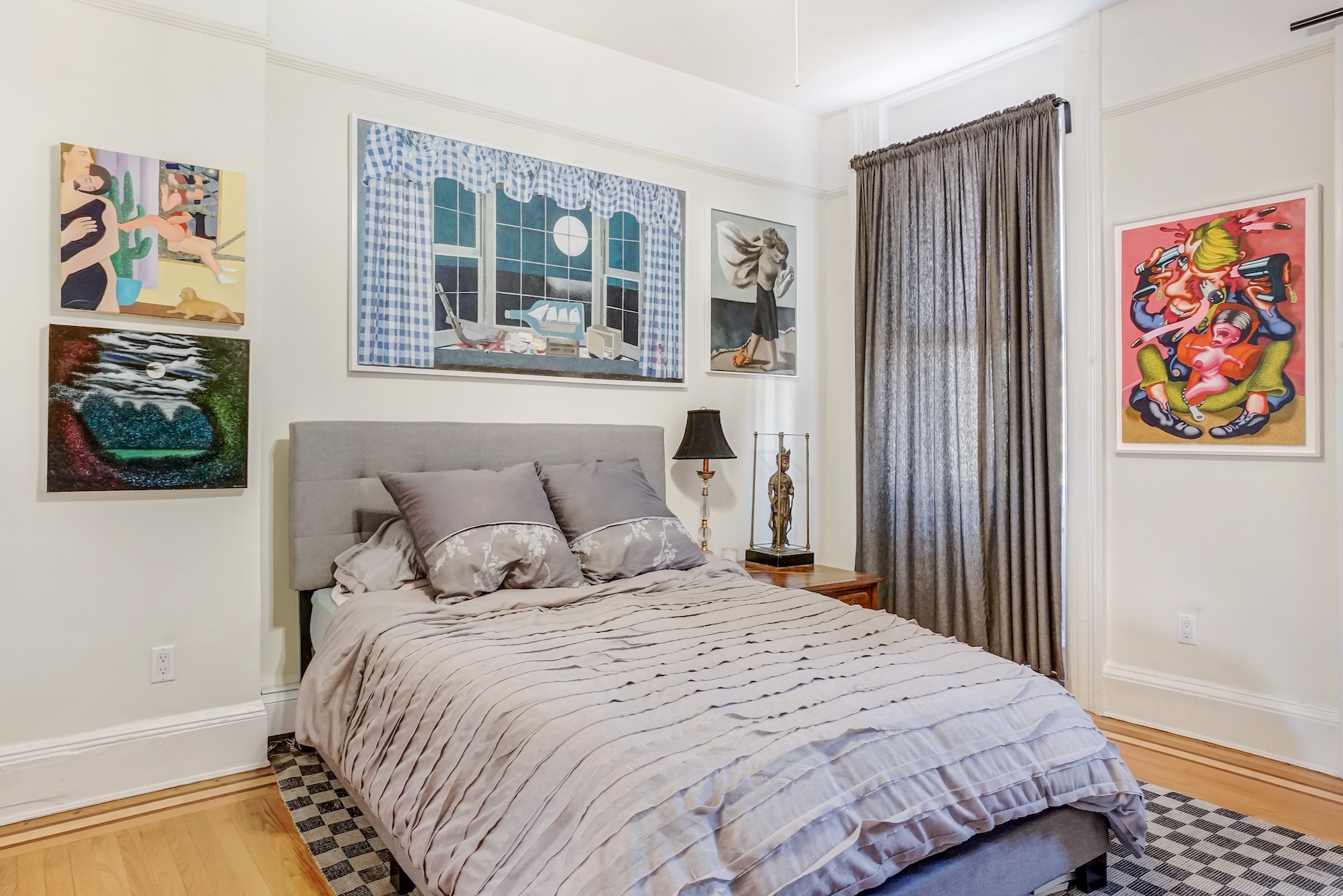
and (right wall) Peter Saul. Courtesy of Jonathan Travis
Have you ever presented/would you wish to present your art collection publicly?
I haven’t presented my works publically yet, but I will be very soon! I am organizing my first show, which opens at Patrick Parrish Gallery in Tribeca, on October 24th. It is a group show comprised of twelve figurative painters that I love, and a few of the works in the show are in my collection. There are works for sale in the show, but the works I own are not.
How does your background in economics and finance help you with collecting?
Honestly, it doesn’t help. Art collecting for me is based on my gut reaction to a work. When I see a work I truly love, I’ll get an internal feeling so strong that almost forces my hand to write a check. It’s hard to articulate fully.
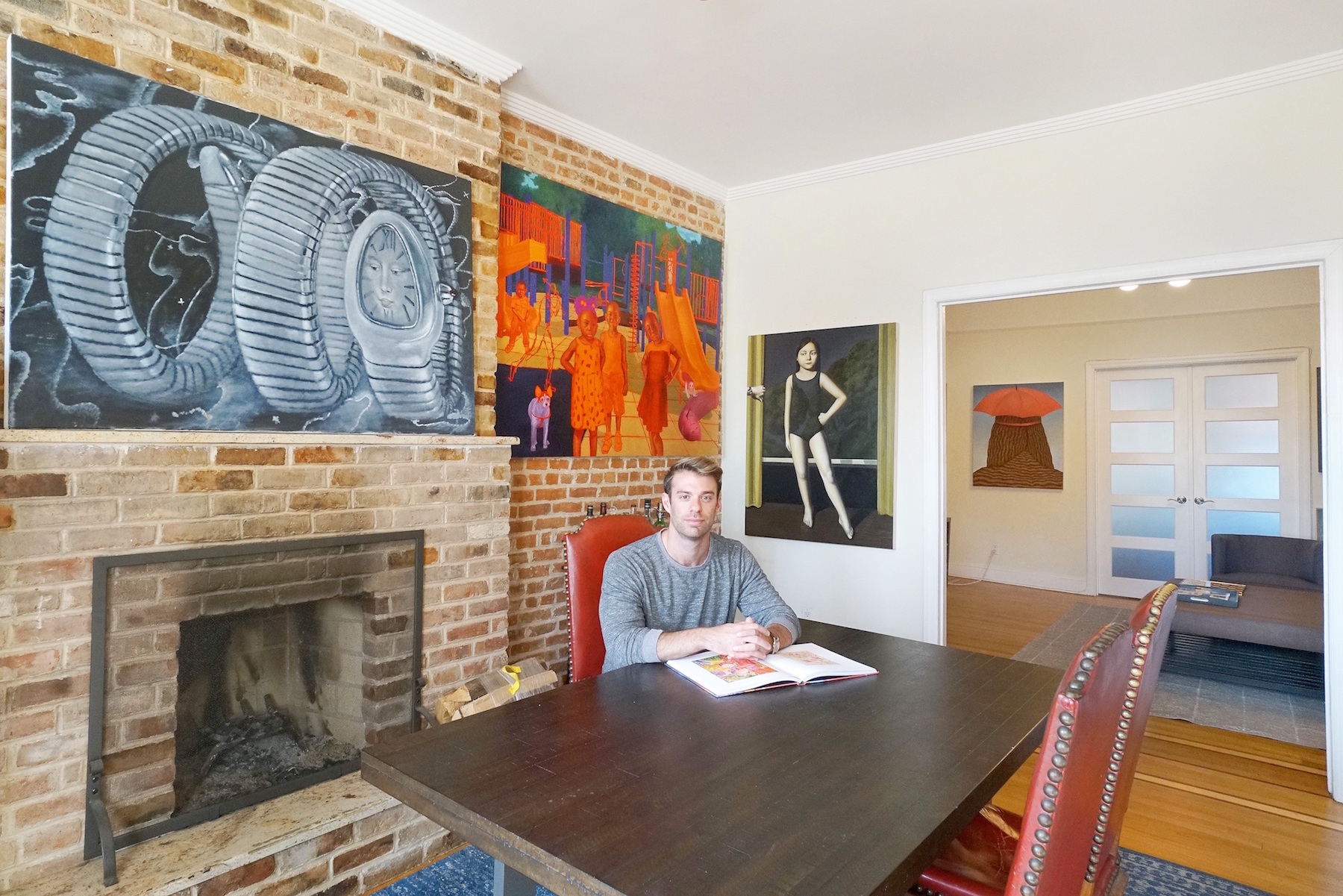
What considerations guide you to make a purchase?
Firstly is my immediate reaction to seeing the work in person. If I get that “holy shit this is good” feeling, that’s usually all I need. Then come the economics, what other works the artist might be making in the near future, what access to the work will be like. I always try to be patient enough to buy the best examples of the artist’s work I can afford.
Is there any kind of artwork that can make you write a cheque without any consideration? If yes, what is that?
Absolutely. There isn’t a unilateral rule for me, but let’s say I’ve been waiting more than a year for a work by a particular artist. Then, I get offered an example I love, no additional consideration is needed.
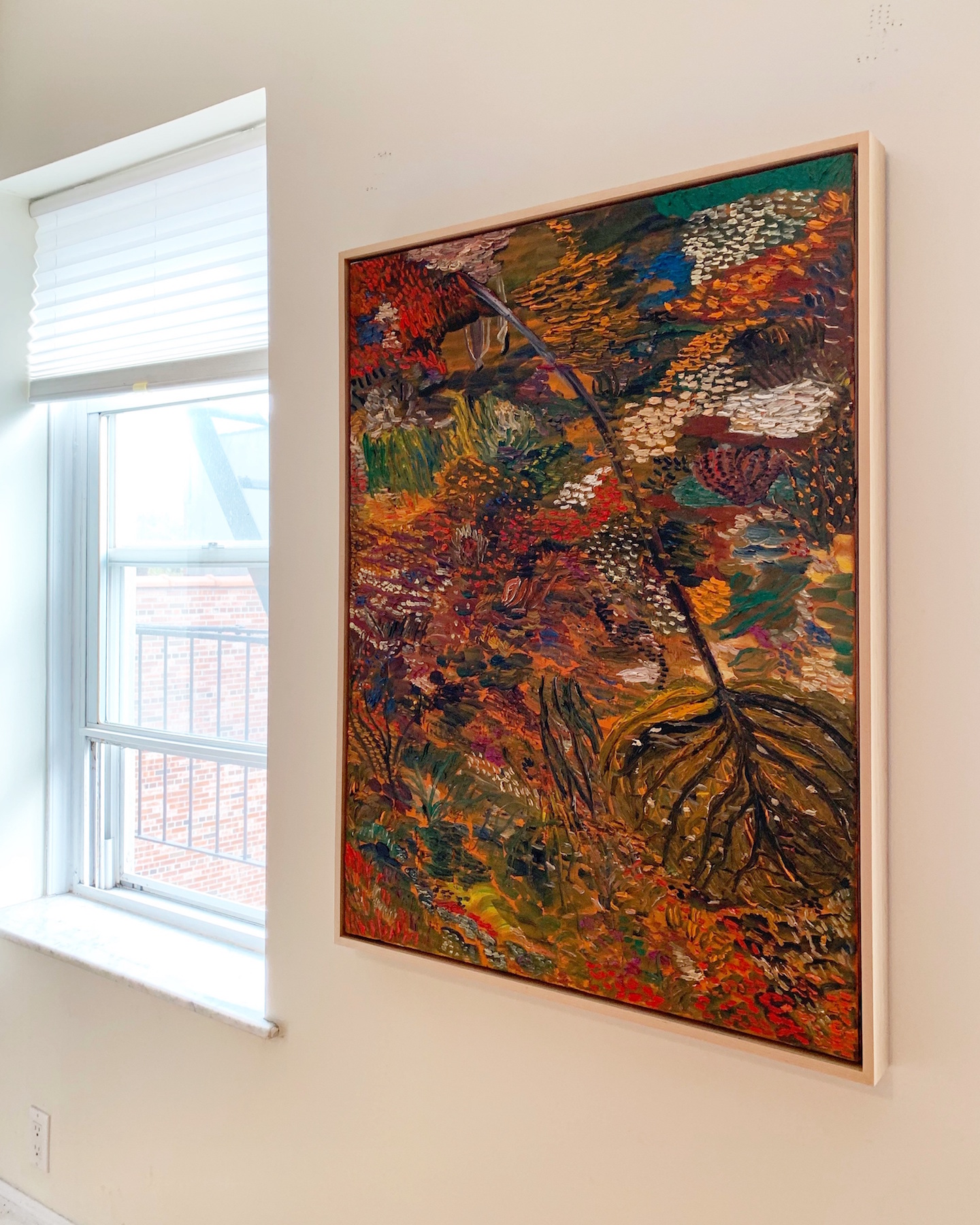
What is your most treasured artwork?
That’s a tough one, but I would say the painting I own by Matthew Wong. Back in 2017, I purchased a small painting by Matthew. About a month later, I happened to be in the gallery when they got a shipment of new works in. I saw this one, and it was love at first sight. The composition, colors, size, everything about it was perfect. The gallery (Karma) was nice enough to let me trade up to get the one I have now. Tragically, Matthew passed away recently, and I am super grateful to own the work I do. He was brilliant.
You often post artwork images on your Instagram. How does Instagram help you collect art? How does it help you to get clients in the art field?
I love sharing the works I buy on Instagram. Instagram is also a great tool for making new discoveries. Several of my favorite paintings are by artists I discovered while browsing on Instagram.
I would say it helps me get clients because anyone can see my page and immediately see art is a real passion of mine. I love what I do, and I love seeing and collecting art.
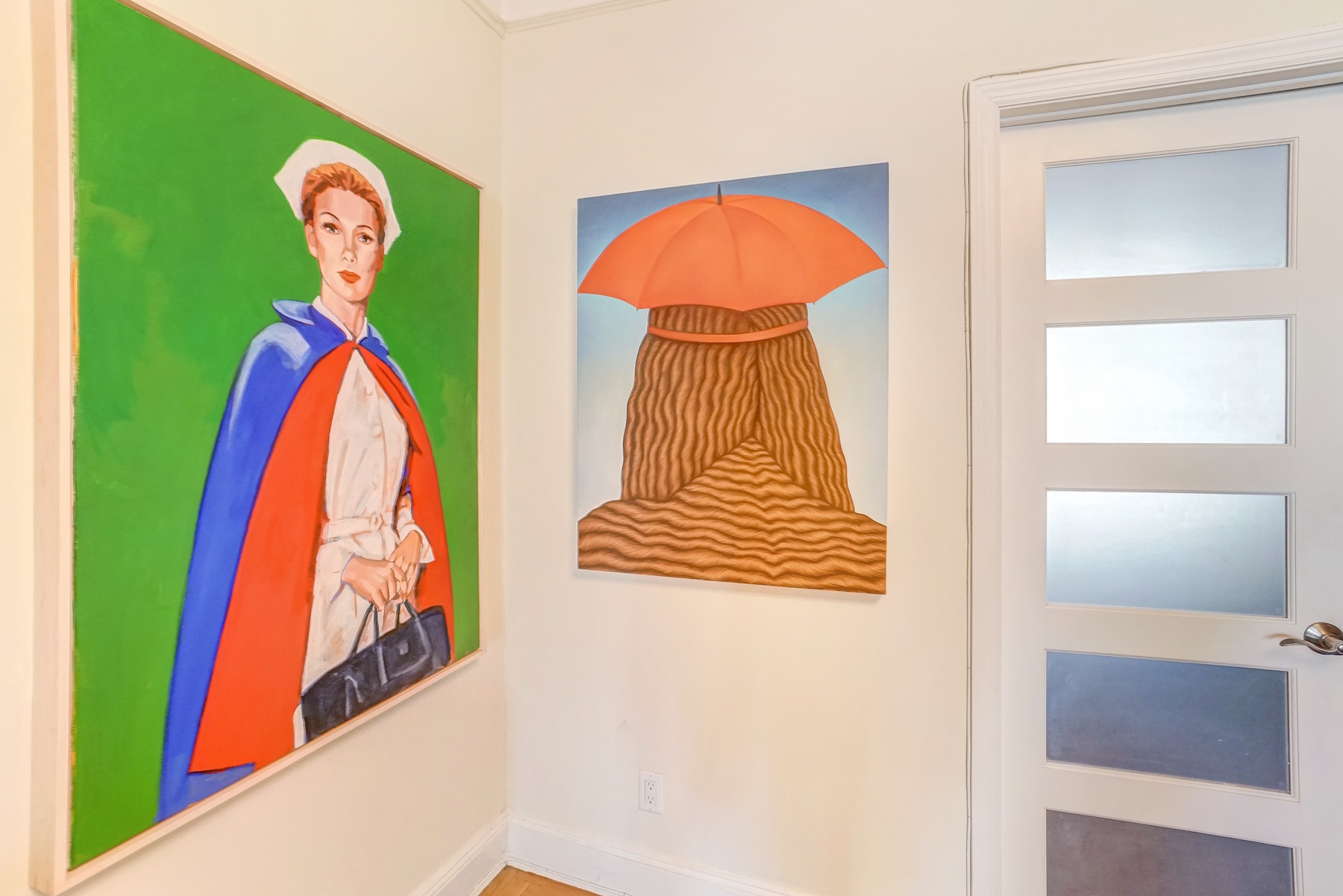
Career and the Art World
How and when did you come up with the idea to merge your passion for art with your real estate dealer career? Any interesting/memorable stories to share from this journey?
Well, I started my real estate career at a large corporate firm. I knew quickly I enjoyed real estate, but hated the environment I was in. So I made a decision to leave that company and go out on my own. This was seriously fucking nerve-racking as commercial real estate is one of the most competitive industries, in the most competitive city in the world.
The pivotal moment came when I read a Wall Street Journal article in 2014 about the newly transforming neighborhood of West Chelsea. In the article, a dealer named Casey Kaplan was quoted as saying he did not like what was happening in the area, and when his lease expired the following year he wanted to leave. I sent Casey a cold email introducing myself and telling him I read the article, and would work my ass off to find him a new space. Thankfully, he gave me an opportunity to meet with him at the gallery, which went well, and was able to find him a new home for the gallery. Because he was the first prominent gallery to leave the neighborhood, a major real estate publication called the Real Deal ran a feature story about it. Casey then introduced me to Anton Kern, whose townhouse on 55thstreet I found. Since that day, I’ve sent over 10,000 cold emails to gallerists around the world introducing myself and my services. I would say the Casey Kaplan deal, my firm sponsoring the Independent Art Fair this year, and all the recent press the Tribeca migration has gotten are the most significant moments in my career. I’ve worked really hard over the past four years bringing galleries to the neighborhood, and the art world has now definitely taken notice.
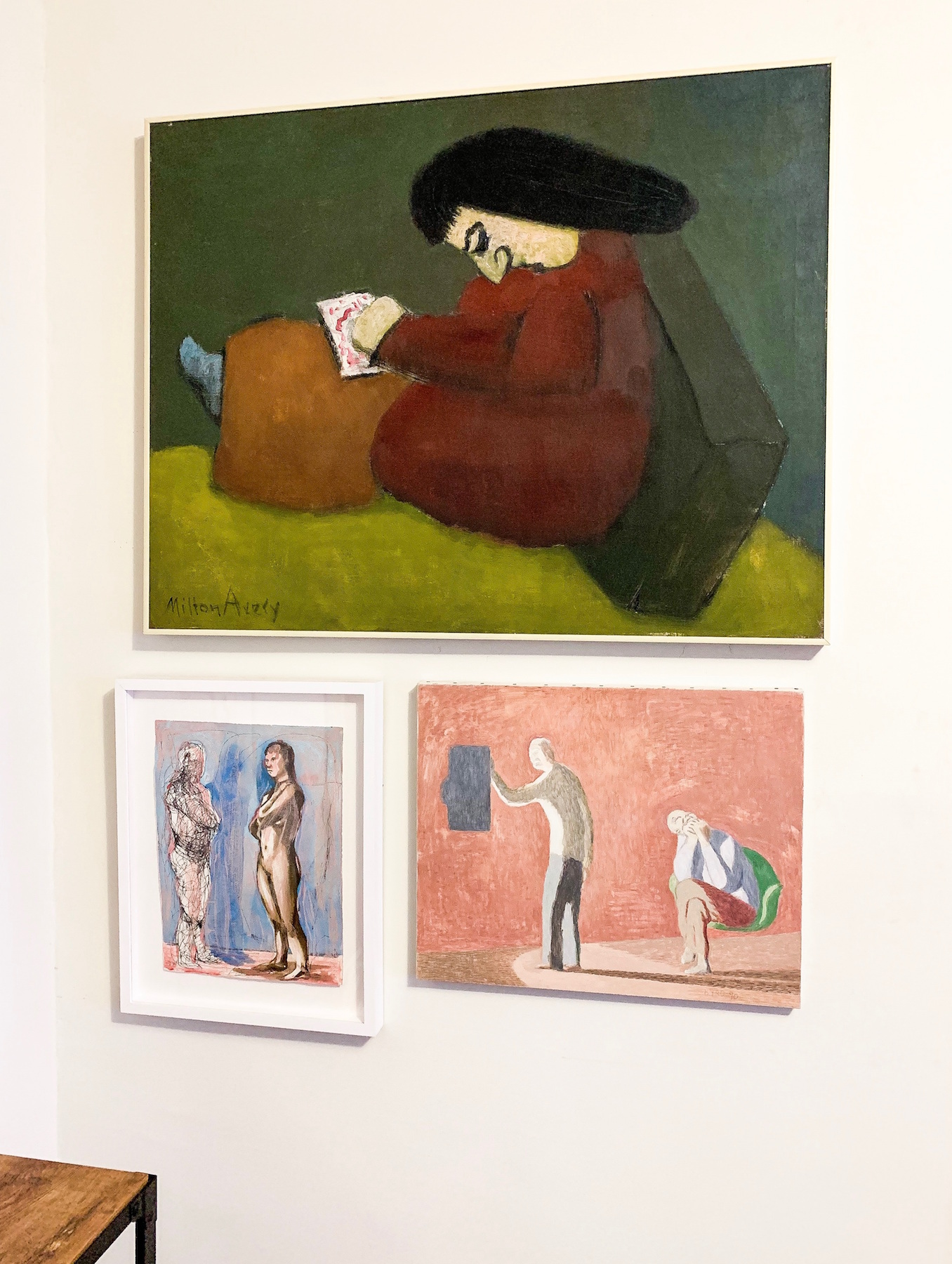
Who inspires you the most in the art world?
Without a doubt the artists. It amazes me how they bare their souls through their work only to be judged by people they don’t know, and who don’t know them. That takes bravery and grit.
Can you name three emerging artists who should be on our radar?
I could name 20, but here are three! Sasha Gordon, Lenz Geerk, Emily Ludwig Shaffer
What are you especially excited about in regard to art in New York before the end of the year?
The show I’m organizing, BIG PAINTING. It really is a passion project.
Instagram: @jonathan_travis
Selection of artists Jonathan selects:
Emily Ludwig Shaffer
Julie Curtiss
Lenz Geerk
Letha Wilson
Nicole Eisenman





